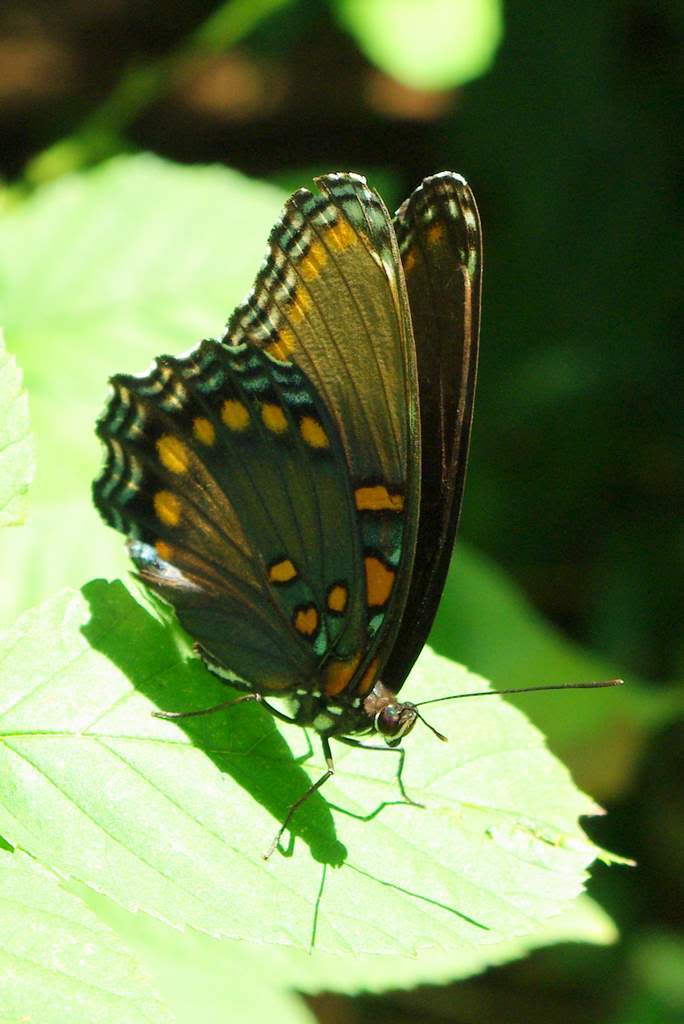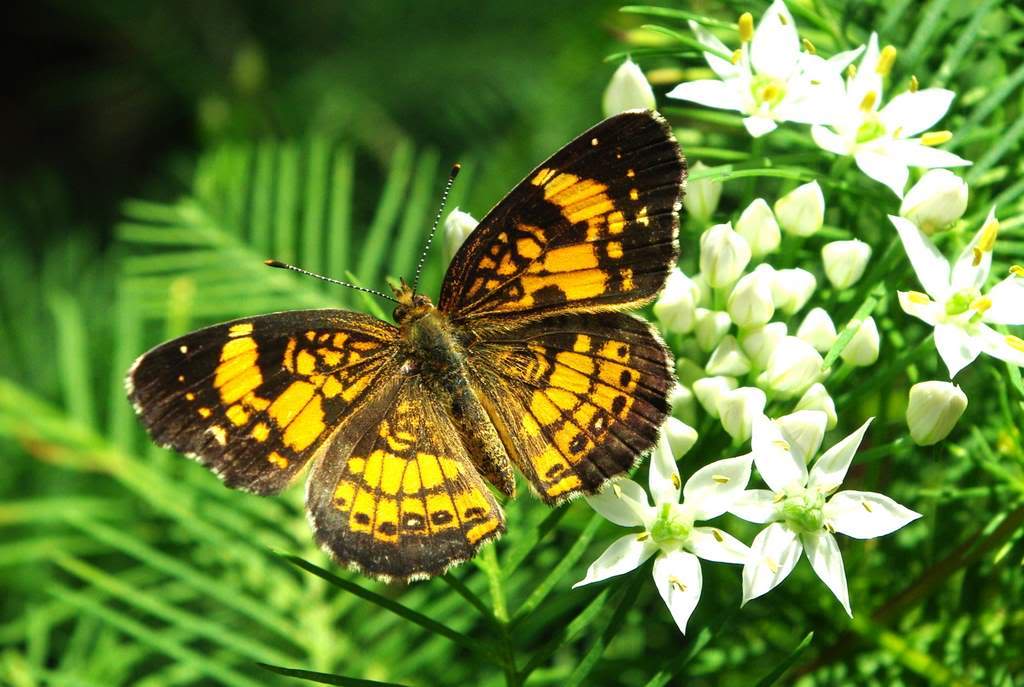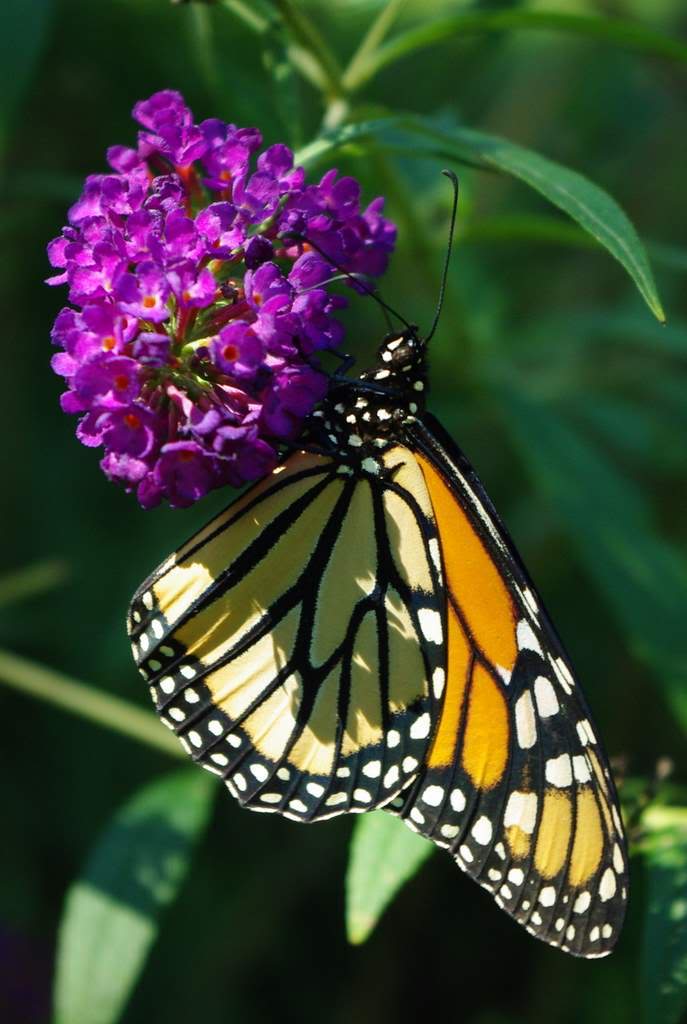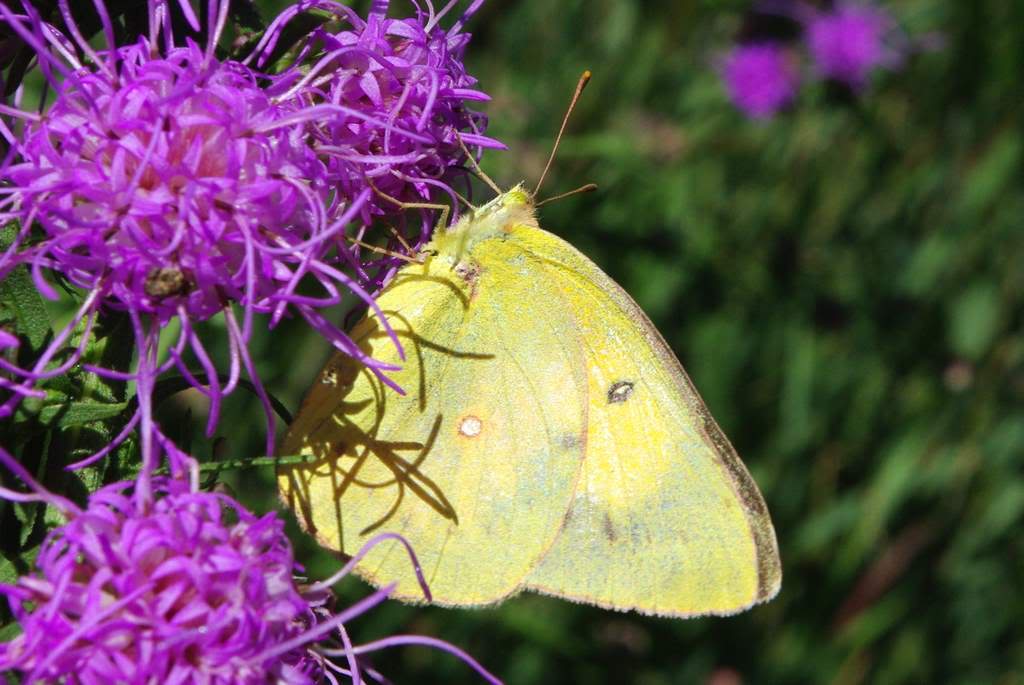More butterflies
>> Monday, September 6, 2010 –
butterflies,
butterfly bush,
liatris
I've been keeping an eye on the butterflies moving through the yard, in the hopes of seeing something unique, or not as common. I'm grateful for every butterfly that appears, but there are some that are more exciting than others. Not that anything in my yard is very rare, but if it's not something I regularly see (or some species I haven't been seeing for weeks already), I grab the camera!
Then it's usually a lot of snapping and deleting of photos, since butterflies don't typically like to sit still -- some species seem to, but most pretty much just want to dart around. That is unless you catch them early enough in the day that they're still getting warmed by the sun, so they're more sluggish and will sit still a little bit longer. Plus they will open their wings more to provide more surface area for the sunlight to heat.
Luckily, it was still there! Looks quite different with its wings closed, but that's fairly common with butterflies.
It looks a lot like one of the black swallowtails, which seem to be much more common around here. It doesn't have the "tails" on its wings though, and the coloring is quite different when you start looking at it more closely.
Here's one that I've seen before, but I really liked the way this shot turned out so I included this photo of a Common Buckeye:
It's on the garlic chives flowers, as is this Silvery Checkerspot:
It's a small butterfly, but quite nice. I scared it off a few times when moving the camera in, but it returned to the exact same spot each time. I don't know how butterflies know where they're going when they fly so erratically and quickly.
I'm glad it kept coming back, as it took a while to get some good shots. The cypress vines that have taken over my veggie garden fence kept getting in the way.
On to another very common butterfly in my yard: the Silver-spotted Skipper.
Not much to look at from the top. It's really shaggy! This is how you usually see it:
The large white spot is hard to miss, isn't it?
Speaking of common, how about the butterfly that everybody knows about: the Monarch.
I was hoping to get a shot of this one with its wings opened, as that's the way to tell if it's male or female (the top of their wings have different markings in one area for males). I'm not sure if the bottoms of the wings show the same markings as the tops, but if they do, this is a female.
Did you know that Monarchs are not bothered too much by birds and other predators? They have toxins in their body that make them taste bad, so most predators learn to avoid them. The toxins came from the milkweed that is the food for the Monarch larvae (caterpillar).
Finally we have what may be the same species of sulphur that I saw last time, although I'm not sure. This time I'm pretty certain what I have is a Clouded Sulphur:
Although it could be an Orange Sulphur, or a hybrid of the two. The world of butterfly identification can be pretty tricky, so I'll leave exact IDs to the experts. I think calling this a Clouded Sulphur is good enough for most people, right?
There's one small butterfly I saw today that I've never seen before. I wasn't able to get a photo before I scared it away though. It was a Red-banded Hairstreak. It looks similar to the Grey Hairstreak which I see all the time, but has a reddish-orange band across its wings. I was trying to get it into the light, as it was hanging from the bottom of the garlic chive flowers, staying in the shade of the flowers.
I later read that they often keep to the shade. Here's an important tip when photographing butterflies: take too many photos. Start shooting before you get close enough, or before you have the perfect shot composed. It's better to have some image of that rare butterfly -- you can aim for the perfect photo after you get a few "backup" images in the camera. I wish I would have done that today.
You can bet I will next time.














